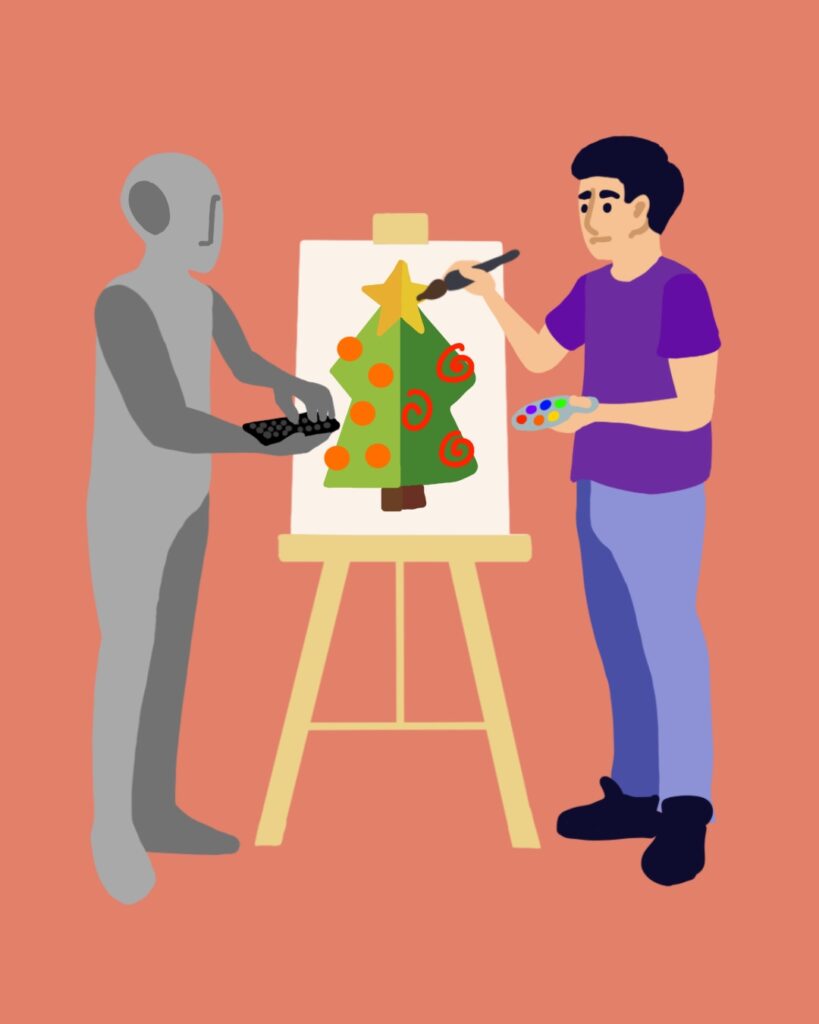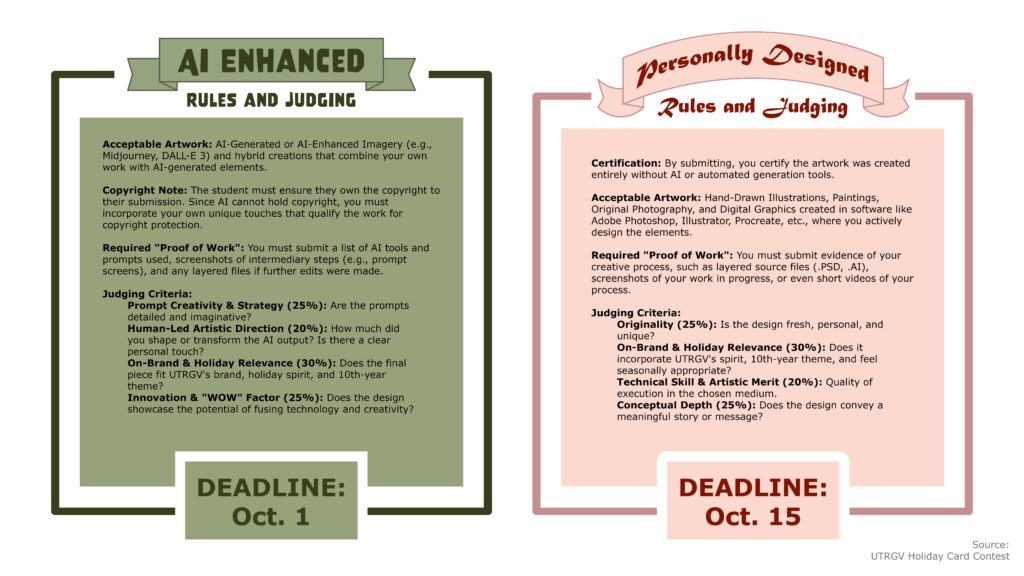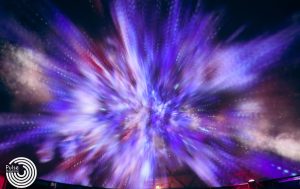The Curious Case of the UTRGV Holiday Card Contest

The 2025 edition of the University of Texas Rio Grande Valley’s Holiday Card Contest continues the yearly tradition with a new splitting of two new distinct categories after last year’s AI-winning controversy.
The Holiday Card Contest originated with Guy Bailey, president of UTRGV, bringing the tradition with him from his tenure at Texas Tech University in 2015.
According to Patrick Gonzales, vice president for University Marketing and Communications, the contest was created in part due to an observation by faculty that instead of getting an outside source to design a university card, it would be more fun if students took up the challenge.
“Why try to create one from scratch when we have talented students who could probably do something better than the professionals?” Gonzales asked.
Students raised concerns about the Holiday Card Contest last year over the winner’s usage of AI in their submission. This continues a growing discussion among the student body and universities over AI usage in art and academic situations.
After hearing feedback from students and the UTRGV community, the rules were subsequently modified, according to Gonzales.
On the contest website, there are now two distinct categories. The first is the “Personally Designed” category for submissions that are for “designs where you are in full creative control,” such as hand drawn and photographs. The other category, the “AI-Enhanced” category, stresses that while AI can assist the design, “your own unique touches and artistic direction” are needed for copyright, and to get a leg up over other submissions.
Another change is more emphasis on students including explanations on their process in creating their submissions.
For the AI submissions, there is now a field to enter a step-by-step walkthrough on how the work was created.
Gonzales explained these changes were made after meeting with faculty, students and the judges for the contest. He maintains this is more of a compromise, as there will be “traditionalist” students who don’t think there should be an AI category and vice versa.
According to him, the main goal of the contest is to have a low barrier, so any student can feel they can participate.

Patrick Reed, school of Music lecturer at UTRGV, uses AI in the classroom, but only for machine learning for sound processing. He said artificial intelligence is a combination of ones and zeros, and that tends to put people who are scared of the service at ease.
To Reed, AI are just algorithms and math that have been around for years and years, before the rise of apps like ChatGPT and Google Gemini.
“If you’re going to use AI, you should be generating thousands of images, pick what is good, then further develop the prompts and refine it,” he said.
He said separating the two categories is good, since AI works being clearly marked is one factor the commercial usage of AI needs to improve on.
“There needs to be more ways of being able to recognize AI because it’s becoming more realistic,” Reed said.
From a student perspective, Nancy Grimaldo, a visual communications senior, said she thinks the splitting of the categories is a nice step to have.
For her, the biggest flaw of last year’s contest was the lack of specificity and communication over what was allowed. She was also surprised that last year’s winner was artificially generated.
“I didn’t really expect that the winner would be AI,” Grimaldo said. “I’ve seen other people’s previous works, and ‘I’m like there’s a lot more hard work that was put into other works.’”
While she doesn’t feel necessarily personally comfortable with using AI, she admits that it is a growing aspect of everyday life.
When it comes to the rule changes, there are some who still have questions about the weight and viability of the guidelines.
Jesmil Maldonado, School of Art and Design lecturer at UTRGV, thinks the rules do relieve some of the tension of last year’s edition. However, she does have concerns regarding both categories having the same prize amount of $1,000.
“I do feel that the compensation [for AI] shouldn’t be the same as those that are doing everything traditional,” Maldonado said.
She feels artists going the traditional route have a more extensive and time consuming process to creating their art, warranting those submissions having more weight.
Maldonado is also not sure how the contest organizers would be able to control what amount of the process of the AI submissions used artificial intelligence and how much was done by the student.
As for her personal stance on AI, she said she feels the traditional route is crucial to forming an artist’s taste and style.
“In my case, I like for them to develop their motor skills and to develop more of that research,” she said.
The contest is open to all students regardless of major or classification. Students entering the contest must personally design a holiday card for the university. The deadline for AI-Enhanced submissions is Wednesday, with the Personally Designed is Oct. 15. More information about the contest is available at UTRGV Holiday Card Contest website.





